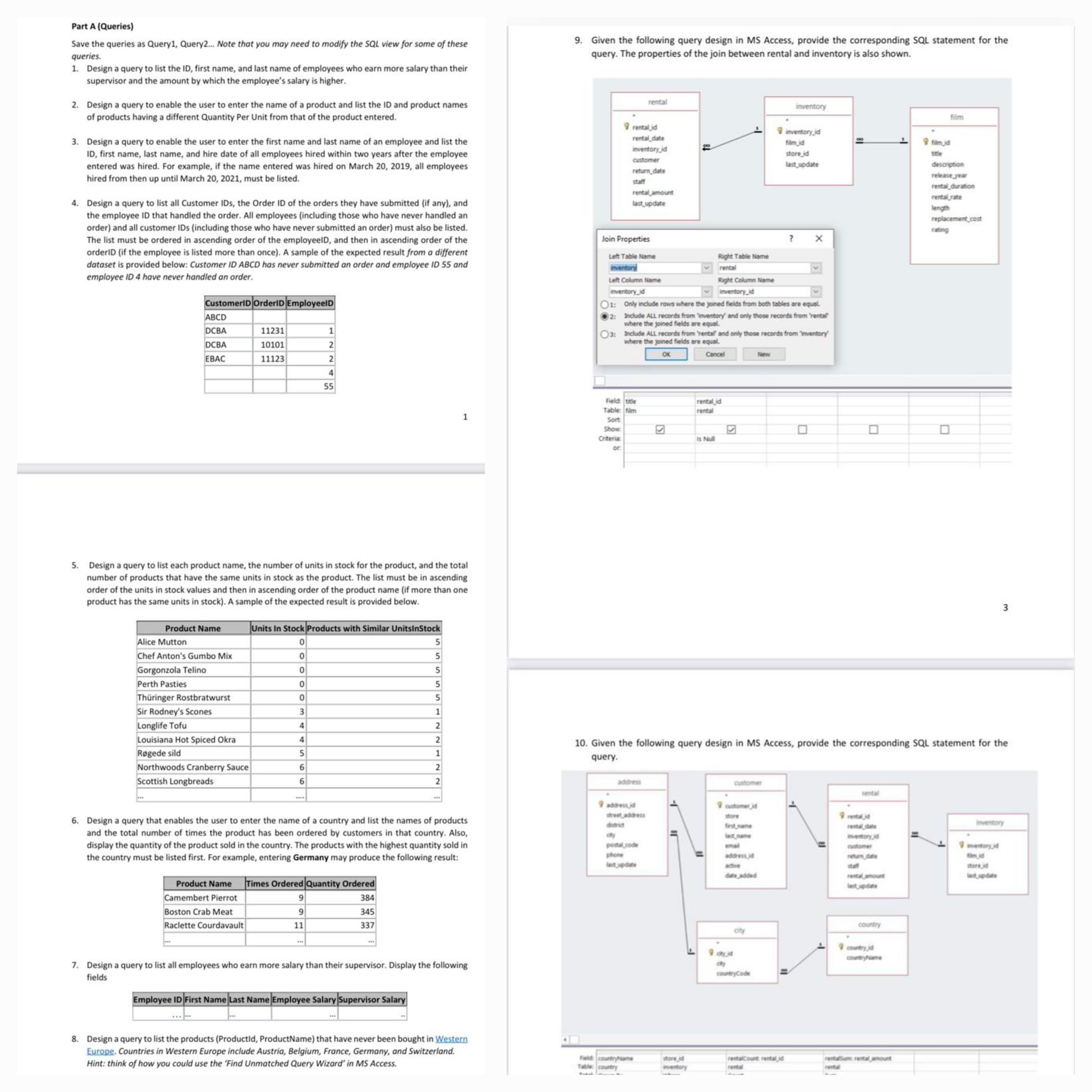Answered step by step
Verified Expert Solution
Question
1 Approved Answer
Part A ( Queries ) Save the queries as Query 1 , Query 2 . . . Note that you may need to modify the
Part A Queries
Save the queries as Query Query Note that you may need to modify the SQL view for some of these queries.
Design a query to list the ID first name, and last name of employees who earn more salary than their supervisor and the amount by which the employee's salary is higher.
Design a query to enable the user to enter the name of a product and list the ID and product names of products having a different Quantity Per Unit from that of the product entered.
Design a query to enable the user to enter the first name and last name of an employee and list the ID first name, last name, and hire date of all employees hired within two years after the employee entered was hired. For example, if the name entered was hired on March all employees hired from then up until March must be listed.
Design a query to list all Customer IDs, the Order ID of the orders they have submitted if any and the employee ID that handled the order. All employees including those who have never handled an order and all customer IDs including those who have never submitted an order must also be listed. The list must be ordered in ascending order of the employeeID, and then in ascending order of the orderiD if the employee is listed more than once A sample of the expected result from a different dataset is provided below: Customer ID ABCD has never submitted an order and employee ID and employee ID have never handled an order.
tableCustomerIDOrderiD,EmployeelDABCDDCBADCBAEBAC
Design a query to list each product name, the number of units in stock for the product, and the total number of products that have the same units in stock as the product. The list must be in ascending order of the units in stock values and then in ascending order of the product name if more than one product has the same units in stock A sample of the expected result is provided below.
tableProduct Name,Units In Stock,Products with Similar UnitsinStockAlice Mutton,Chef Anton's Gumbo Mix,Gorgonzola Telino,Perth Pasties,Thringer Rostbratwurst,Sir Rodney's Scones,Longlife Tofu,Louisiana Hot Spiced Okra,Rgede sild,Northwoods Cranberry Sauce,Scottish Longbreads,dots..,dots

Step by Step Solution
There are 3 Steps involved in it
Step: 1

Get Instant Access to Expert-Tailored Solutions
See step-by-step solutions with expert insights and AI powered tools for academic success
Step: 2

Step: 3

Ace Your Homework with AI
Get the answers you need in no time with our AI-driven, step-by-step assistance
Get Started


